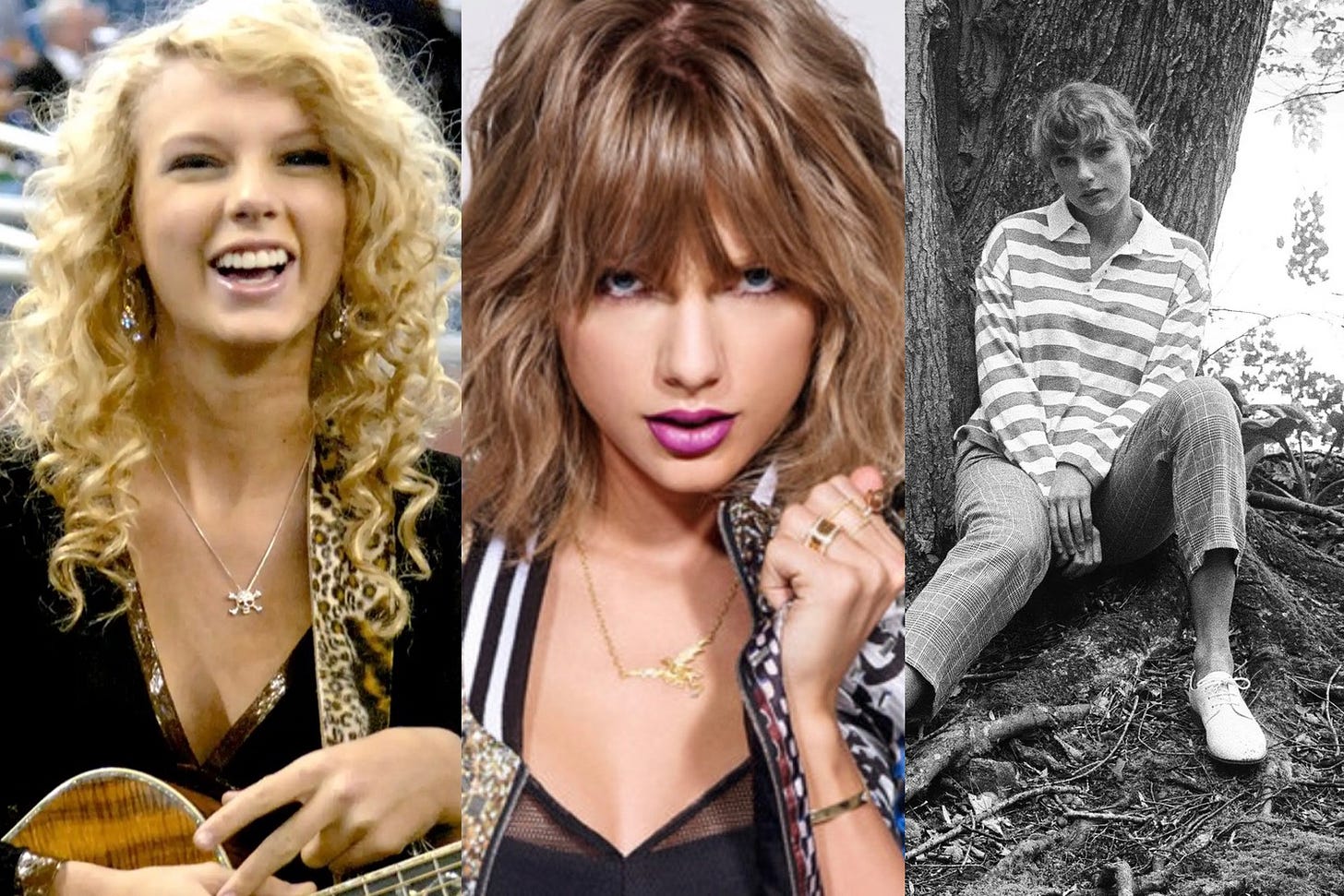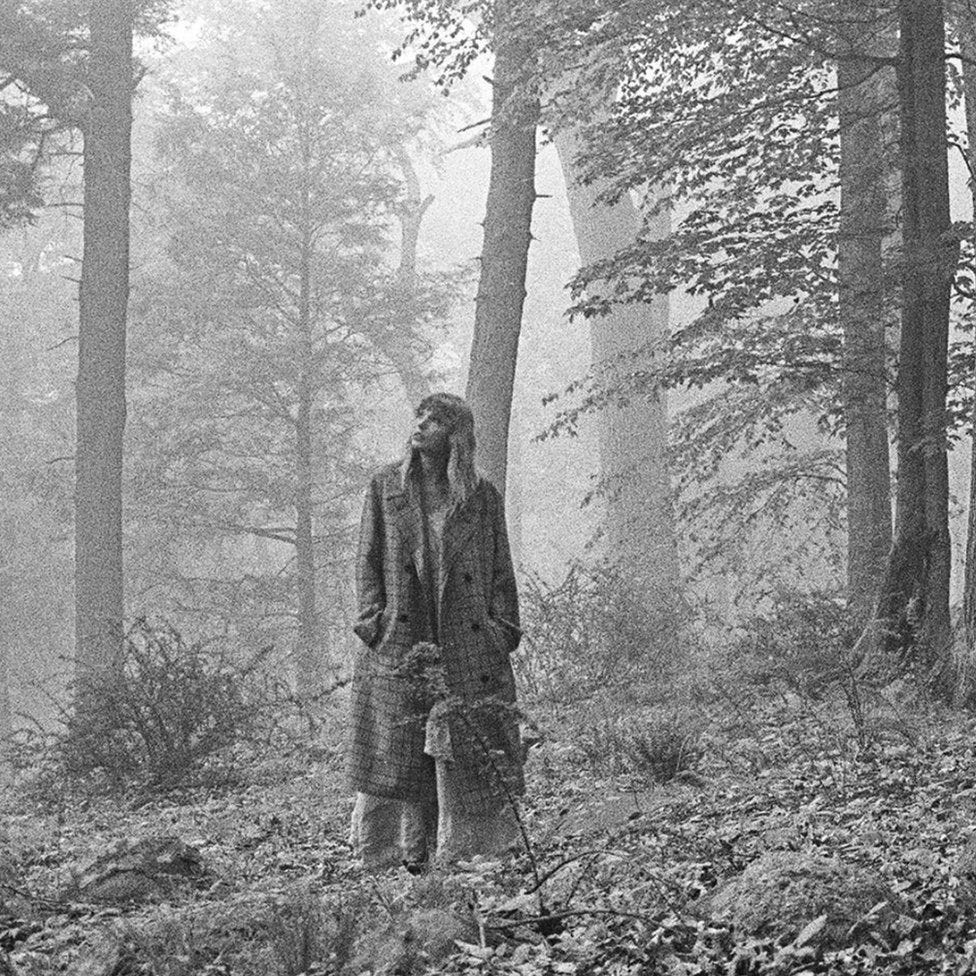A few years ago, referring to the regular schedule by which she emerges from seclusion with a completely new look and persona, Taylor Swift remarked:
"The female artists that I know of have reinvented themselves 20 times more than the male artists. They have to or else you're out of a job"
This is, of course, silly. Most of the best-selling female acts of the last half-century have never “remade” themselves: Mariah Carey, Celine Dion, Jennifer Lopez, Dolly Parton, Adele, Shakira, Reba, on and on. You could probably count Britney Spears as being un-re-made, at least given that we can assume she was always like that. I’d even add Cher to the list, insofar as her whole shtick is about “being remade,” sometimes several times in the same set. Meanwhile, in order to stay relevant Harry Styles recently had to start wearing women’s clothes, and Justin Bieber has lately remade himself into an alcoholic trailer-trash bus driver from Junction City.
This is not a gendered phenomenon. Taylor Swift has “remade” herself so many times not because she has to but because she wants to—she enjoys it. Which, I mean, if that’s what you’re into, sure, go ahead. But why pretend it’s a relic of the patriarchy when you plainly just, you know, like to do it?
I would imagine, with some degree of certainty, that Taylor Swift is somewhat uncomfortable reflecting on her periodic “reinventions” and has thus convinced herself that it has been out of necessity rather than mere preference. And honestly you can kind of understand that discomfort, because Taylor Swift’s whole entire process of “reinvention”—of maturation and of aging, from young country belle to wizened, reflective important artist—has been, not to go on and on about it, just really goofy, almost like a comedic routine, one of the longest and most understated gags in showbiz history.
That it should be this way is, when you consider it, not surprising. Swift is in many ways the poster child for the Millennial generation, which is arguably the first generation in human history that has effectively forgotten how to grow up. Determining the ultimate source of this malaise will ultimately fall to future historians, if there’s any of them around to do it; we’ve kind of stopped having enough kids to perpetuate society so maybe not. But you cannot deny the practical effects of this collapse of adulthood playing out in real time, today. The Millennials are approaching middle age with no kids, no marriages, no meaningful stability; they are wallowing in a pop culture lubricated with considerable amounts of booze and permanent college-weekend social engagements; their interactions with art, creativity and literature are very often limited to just rereading the Harry Potter series over and over again; their lives are lousy with narcissistic social media and nonstop streaming of TV shows they’ve already watched before. All of the good and fulfilling markers of adulthood that used to signify a shift to real growth, civic participation and emotional development are increasingly absent from their lives.
In this milieu, Taylor Swift’s artistic growth—from a gawky cowboy-boot Pennsylvania gal to the moody, worldly poet she now affects herself as—can seem like a fully comprehensive development in comparison. But in fact the progression of her work and her public personality have been constrained by the same sort of limiting principles that are spiritually crippling the rest of her generation. When she was a young woman she was a romantically emotional sort of boy-crazy popsy; now she’s grown and she’s the type of sophisticated woman who takes grainy black-and-white photos in bohemian clothing while contemplating life in the middle of a foggy forest. It’s exactly the kind of maturing that someone would picture for herself if she didn’t really have any idea what it really means to grow up. It is, in other words, what a kid might picture when she thinks of being a grownup.
Even some of the more subtle elements of her work have themselves reflected this kind of slide into what you could call aged adolescence. Consider that the video for one of her earlier hits, “Mine,” features her getting married in a church and ending up pregnant not once but at least twice within the span of five years. Those are the sorts of wildly countercultural decisions that cause your friends to whisper things to each other when you’re not listening (believe me).
Not many years later, in her widely, wildly hailed single “Lover,” her calculus of a meaningful union has shifted considerably: There is indeed a child present in the music video, but it’s not at all clear that a wedding has even taken place (she’s singing about a “lover,” remember, not a husband); indeed it’s not clear that the events depicted in the video happened outside of the child’s daydream, which is a great if inadvertent metaphor for the uncertainty a child likely feels when her parents aren’t even married in the first place. As Shannon Palus noted at Slate, the video itself establishes a “layer of distance between the song and its marital fantasy,” in much the same way that the video for “Mine” closed the gap between the song and the wedding it ultimately depicted. It’s a perfect progression from aspirations of traditional stability to aspirations more of, as she sings in the later song, “leav[ing] the Christmas lights up ‘til January.”
To be sure, this is all more a symptom of our present social collapse than a cause (though it is probably something of the former, too). Taylor Swift isn’t to blame for this malaise; she is rather merely a product of it, even if she’s made a quadrillion dollars off it. One of the principle current zeitgeists of our times is that adults are simply not growing up, and that when they do they don’t do it as well as it used to be done. You can only argue against this so much. McDonald’s has released a line of adult happy meals, for instance, and they’ve proven so wildly popular that they’re selling out across the country. For all their flaws, it is hard to imagine very many Baby Boomers standing in line to wait around for this nostalgia-bait crap. We all know who’s buying those things. LinkedIn, meanwhile, urges companies to retain Millennial talent by “appealing to their inner child” and offering lunch lessons to teach them exotic skills like “time management” and “balancing work and life.” This is rough stuff. Those of us who figured this stuff out on a reasonable timescale can imagine how painful it probably is to be stuck in that sort of personal mummified stasis.
If you’re of that demographic and you’re trying to figure out how to age well, the best advice is probably to just stop dragging your feet and do it. Get and hold a job, find someone and marry them and start a family with them, read a lot more books and watch a lot less TV, eat real food, etc. Stop acting like a kid, in other words. But also don’t act like a kid’s idea of what an adult should be like; don’t hold onto the childish perceptions of adulthood that you formed when you were seven or 10 or 14. Just be normal, grow up, live your life as someone who is no longer a child. Oh and for goodness’s sake, don’t leave your Christmas lights up until January. It’s tacky.







LOL! Biased much? Why on earth would we want to be married with kids when these days it's absolutely impossible to afford to even own a home despite having multiple incomes? This whole article just reeks of older generation privilege.